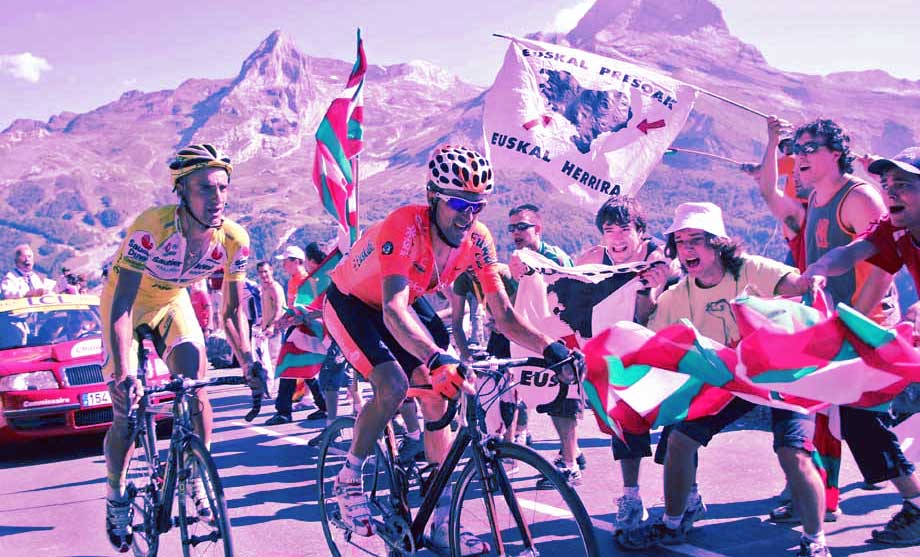
The first mountain was added to the Tour de France in 1905. That mountain was the 1,247m Ballon d’Alsace, and it was met with trepidation and huge amounts of publicity. Press, fans, and riders alike speculated what dangers would accompany the first time cyclists raced over a mountain. Tour organizer and L’Auto editor Henri Desgrange wrote, “None of us knows what the Ballon d’Alsace will bring. The passage through the mountains is this year’s great novelty. Our fear matches that of the riders.”
Which was all very majestic and monumental… Except mountains were not actually new to the Tour de France at all. The Tour had ascended the Col de la Republique (just 17 meters lower than the Ballon d’Alsace) in both the 1903 and 1904 editions of the race. And in fact, there had been a relatively high profile race over the Alpine Brenner Pass organized as early as 1894.
This blindness to the mountains until they were rhetorically useful to organizers Henri Desgrange and Geo Lefevre is no new phenomenon. Cycling has always been a site for production of grand narratives and cultural myths. It was a literary spectacle long before it was a sporting endeavor and remained as such long after television coverage had embraced other sports. Cycling and its technology was a proxy for the project of modernity and its constant drive forward.
But perhaps there’s a less grandiose term to describe the colorful language and exaggeration that accompanied the sport of cycling as it entered its Golden Age: marketing. The Tour was designed and run as a publicity stunt for L’Auto newspaper, recall, and reading Desgrange’s statement above, it’s hard not to see the marketer shining through. In 2021 he’d have his own mailing list generating leads for his course on how to earn $20k a week in passive income. Maybe a few photos with a rented Lamborghini. In 1903 he had a tricycle, a bike race, and a newspaper.
By 1910, mountains were becoming benign as a difficult but regular feature of the Tour. It needed a new frontier, and fortunately one existed. The Pyrenees weren’t just a nearby mountain range, but a strange unconquerable land. Pyrenean tourism didn’t yet exist. As Eric Hobsbawm reminds us, the area was synonymous with the agricultural pre-industrial banditry of legend. The mountains were impassable, riddled with bears. And regardless of if any of this was true, the fact remained that to the French, especially the French of Paris, the Basque country was a mysterious place with its own language and customs.

Still is a bit, to be honest.
The Tourmalet was a bigger climb than the previous mountains of the Tour, dwarfing the Tour’s previous record of 1,326m on the Col de Porte by almost 1,000m. This was probably sufficient for some nervousness on the part of Desgrange and his new creative visionary Alphonse Steines. Desgrange in particular was cautious about tackling the Tourmalet, just as he’d expressed skepticism about organizing the first Tour back in 1903.
That was perhaps a healthy skepticism. The Tourmalet was not only unchartered territory for the Tour, but for the capabilities of the bicycle, which was still a relatively new technology. The mountain’s name did it no favors either, translating as “bad detour.” It was important for the race organizers to separate myth from reality, and to undertake an excursion to determine whether the Tourmalet was ridable at all.
Of course, that’s how the story goes. A much more likely motivation was the opportunity for some myth creation that would generate early publicity for the upcoming edition of the race. It was like an early version of what Rapha does, but somehow with fewer retro mustaches.
And so Steines set off to conquer the Tourmalet, both to prove to Desgrange that it was possible to run a bicycle race over it, and to sow new seeds of grandiosity that would help to sell newspapers and further elevate the success of the Tour de France.
It was late June when Steines departed, but he arrived at the Tourmalet just two weeks after a snowstorm. His car, no doubt the pinnacle of 1910’s auto engineering, nevertheless began to struggle with the steepness of the incline, the road conditions, and ice. He was forced to abandon it at the roadside and complete the summit and descent on foot.
Despite encountering bears early into his journey, it was the treacherous weather that swallowed Steines up and made his march through the night into a fight for his life. He was fortunate to encounter a shepherd, who guided him over the final two kilometers of the ascent. From there, he tackled the descent alone in the pitch black Pyrenean night. After getting lost in a snow drift, he fell into a freezing river, which proved to be fortunate. He used the river flow to find the direction of the valley and followed it to safety.
He later recalled “Even if I lived to the ripe old age of 100, I would never forget the adventure of my struggle against the mountain, the snow, the ice, the clouds, the ravines, hunger, thirst… against everything. Trying to go over the pass in its current condition would be madness. My reckless gamble almost cost me my life. No more, no less.”
Steines finally arrived in Bareges weak, close to pneumonia, and convinced he’d almost lost his life that night. He rushed to send a telegram to Desgrange, which read, “Crossed Tourmalet… STOP… Perfectly passable… STOP.”
When the Tour climbed the Tourmalet for real, it was Octave Lapize who was first to the summit—albeit on foot, pushing his bicycle—and who later won the stage. He recalled encountering Desgrange’s and Steine’s L’Auto colleague Victor Breyer at the summit and, in a fit of desperation perhaps colored by the pre-race hype, shouted, “You are murderers! No-one can ask men to make an effort like this.”

The Giant of the Pyrenees immediately became a regular ascent in the Tour de France, and remains one of its most iconic climbs.

